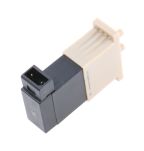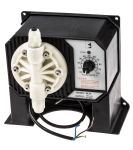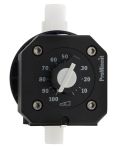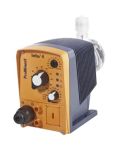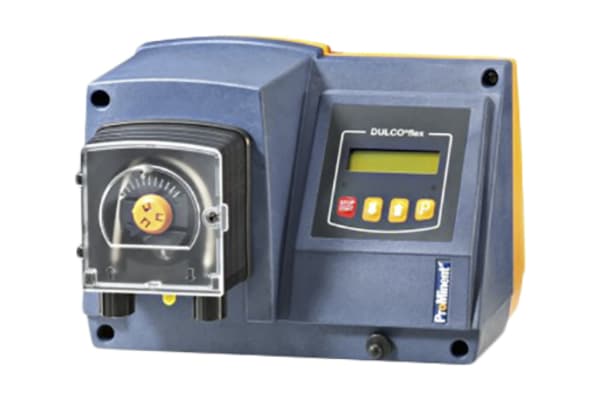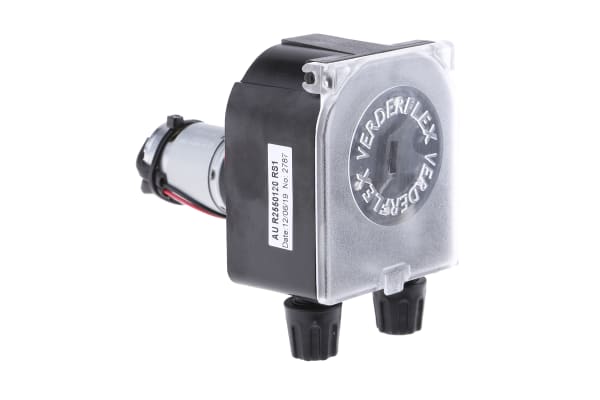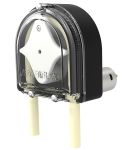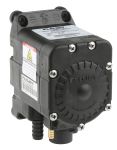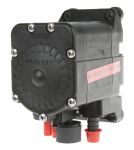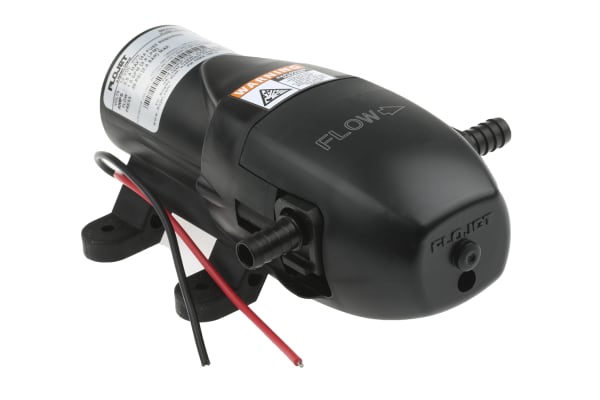Positive Displacement Pumps
Positive displacement pumps are speciality pumps that provide an approximate constant flow of fluid at the fixed speed. Pump trap a fixed amount of the fluid and then force it into a discharge pipe. Positive displacement pumps can produce the same flow at a given speed (RPM) no matter what the discharge pressure is. These type of pumps cannot operate against the closed valve because they have no shutoff head like centrifugal pumps. Positive displacement pumps constantly produce flow and the pressure built within the blocked line will damage the line, pump or both.The positive displacement pumps can be divided into two main categories: reciprocating positive displacement pumps and rotary pumps.Rotary pumps are very efficient because they can operate even with highly viscous fluids but require a slow steady speed rotation. If the mechanism rotation is too fast, the fluid can cause erosion, which eventually causes enlarged clearances that liquid can pass through and reduce pressure.Rotary pumps can be divided into three main types:Gear pumps: the simplest pump type that pumps liquid using 2 gears.Screw pumps: more complicated pump type where the two screws are positioned against each other to pump the liquid.Rotary vane pumps: these pumps have a cylindrical rotary engine. As the rotor circulates, vans trap fluid between the rotor and the engine housing, pushing the liquid through the pump.
-
Burkert Diaphragm Electric Operated Positive Displacement Pump, 5ml/min, 200 mbar, 24 V dc
VND8,508,547.18 -
Hanna Instruments Diaphragm Electric Operated Positive Displacement Pump, 18.3L/h, 7.3 psi, 220 V, 240 V
VND10,036,553.87 -
ProMinent Diaphragm Air Operated Positive Displacement Pump, 1L/h, 16 bar, 100 → 230 V
VND29,477,368.55 -
ProMinent Diaphragm Electric Operated Positive Displacement Pump, 1.1L/h, 16 bar, 100 → 230 V
VND43,166,868.99 -
ProMinent Peristaltic Electric Operated Positive Displacement Pump, 0.35L/h, 4 bar, 100 → 240 V
VND56,410,500.30 -
RS PRO Diaphragm Electric Operated Positive Displacement Pump, 250-300ml/min, 1 bar, 1.5 → 4.5 V
VND1,371,711.88 -
RS PRO Diaphragm Electric Operated Positive Displacement Pump, 380ml/min, 11 psi, 1.5 → 5 V
VND4,423,959.12 -
Verderflex Peristaltic Electric Operated Positive Displacement Pump, 0.24L/min, 1 bar, 12 V dc
VND7,811,392.82 -
Verderflex Peristaltic Electric Operated Positive Displacement Pump, 2200ml/min, 24 V dc
VND24,172,760.36 -
Xylem Flojet Diaphragm Air Operated Positive Displacement Pump, 19L/min, 6.9 bar
VND7,938,186.20 -
Xylem Flojet Diaphragm Air Operated Positive Displacement Pump, 19L/min, 8.27 bar
VND10,713,203.69 -
Xylem Flojet Diaphragm Automatically Operated Operated Positive Displacement Pump, 3.7 g/min, 14L/min, 3.1 bar, 24 V dc
VND12,092,657.08 -
Xylem Flojet Diaphragm Electric Operated Positive Displacement Pump, 3.8L/min, 2.4 bar, 24 V dc
VND4,358,888.59 -
Xylem Flojet Diaphragm Electric Operated Positive Displacement Pump, 3.8L/min, 2.5 bar, 12 V dc
VND4,449,694.41 -
Xylem Flojet Diaphragm Electric Operated Positive Displacement Pump, 3.8L/min, 2.5 bar, 12 V dc
VND4,342,987.11 -
Xylem Flojet Diaphragm Electric Operated Positive Displacement Pump, 3L/min, 20 bar, 230 V
VND13,013,896.77 -
Xylem Flojet Diaphragm Electric Operated Positive Displacement Pump, 8.1L/min, 7.1 bar, 12 V
VND7,827,921.99 -
Xylem Jabsco Centrifugal Electric Operated Positive Displacement Pump, 18L/min, 1.7 bar, 230 V
VND17,573,436.93



